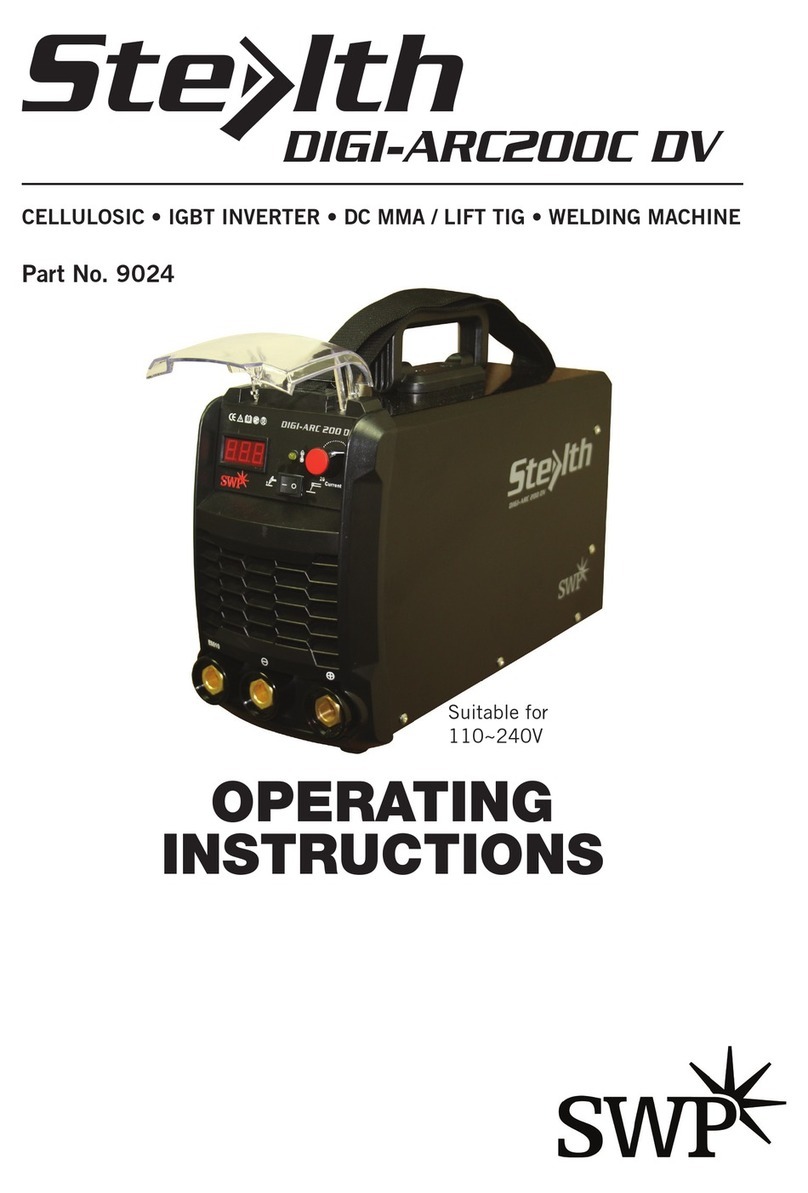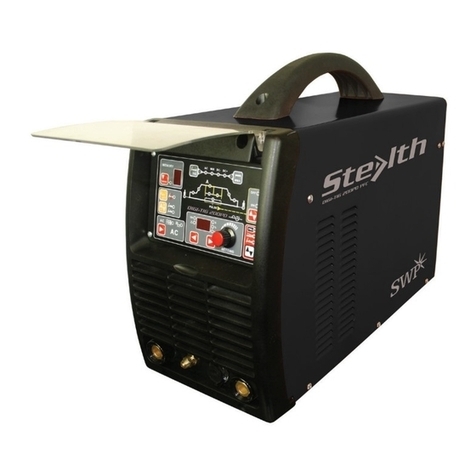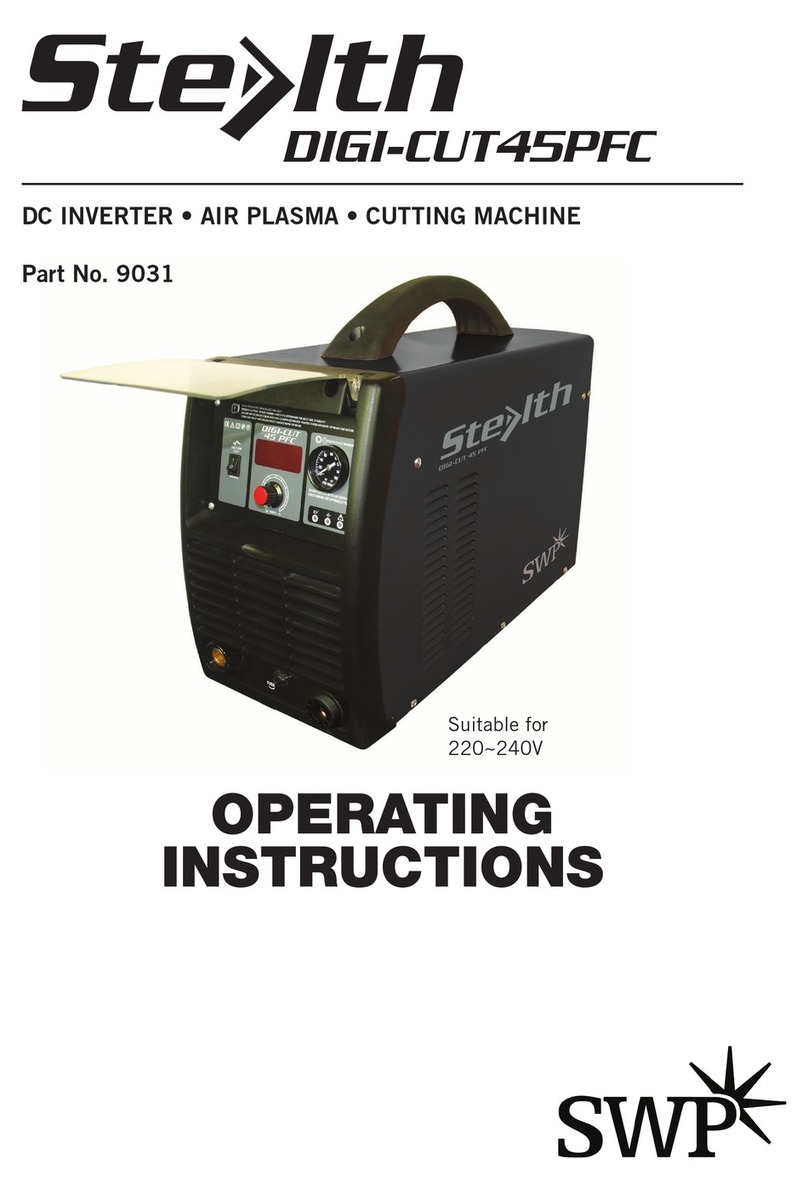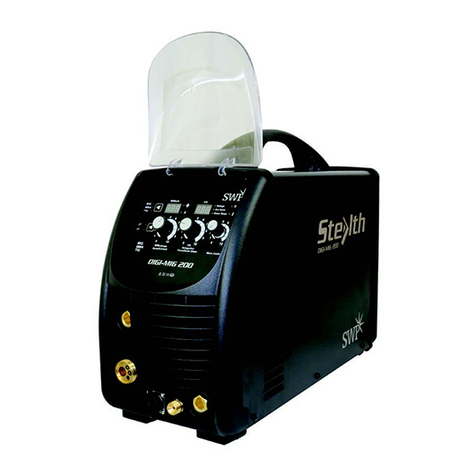SAFETY
- 2 -
Ensure to install the equipment correctly and ground the work or metal to be welded
to a good electrical (earth) ground according the operation manual.
!The electrode and work (or ground) circuits are electrically “hot” when the welder
is on. Do not touch these “hot” parts with your bare skin or wet clothing. Wear dry,
hole-free gloves to insulate hands.
!In semiautomatic or automatic wire welding, the electrode, electrode reel, welding
head, nozzle or semiautomatic welding gun are also electrically “hot”.
!Always be sure the work cable makes a good electrical connection with the metal
being welded. The connection should be as close as possible to the area being
welded.
!Maintain the electrode holder, work clamp, welding cable and welding machine in
good, safe operating condition. Replace damaged insulation.
!Never dip the electrode in water for cooling.
!Never simultaneously touch electrically “hot” parts of electrode holders connected
to two welders because voltage between the two can be the total of the open
circuit voltage of both welders.
!When working above the floor level, use a safety belt to protect yourself from a
fall should you get a shock.
FUMES AND GASES CAN BE DANGEROUS.
!Welding may produce fumes and gases hazardous to health. Avoid breathing these
fumes and gases. When welding, keep your head out of the fume. Use enough
ventilation and/or exhaust at the arc to keep fumes and gases away from the
breathing zone. When welding with electrodes which require special ventilation such
as stainless or hard facing or on lead or cadmium plated steel and other metals or
coatings which produce highly toxic fumes, keep exposure as low as possible and
below Threshold Limit Values using local exhaust or mechanical ventilation. In
confined spaces or in some circumstances, outdoors, a respirator may be required.
Additional precautions are also required when welding on galvanized steel.
!Do not weld in locations near chlorinated hydrocarbon vapors coming from



































